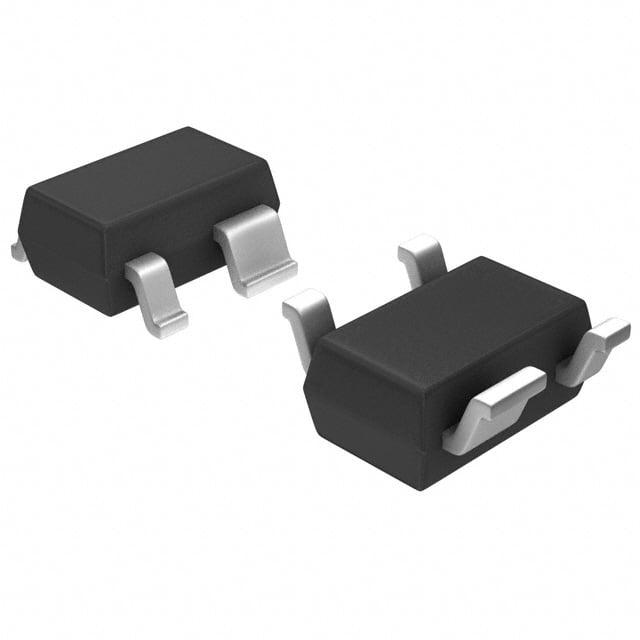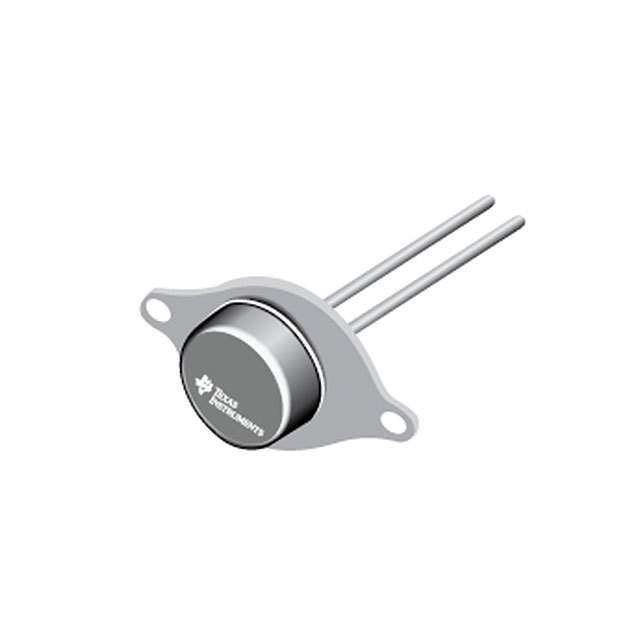ICGOO在线商城 > 集成电路(IC) > PMIC - 稳压器 - 线性 > NCP698SQ18T1G
- 型号: NCP698SQ18T1G
- 制造商: ON Semiconductor
- 库位|库存: xxxx|xxxx
- 要求:
| 数量阶梯 | 香港交货 | 国内含税 |
| +xxxx | $xxxx | ¥xxxx |
查看当月历史价格
查看今年历史价格
NCP698SQ18T1G产品简介:
ICGOO电子元器件商城为您提供NCP698SQ18T1G由ON Semiconductor设计生产,在icgoo商城现货销售,并且可以通过原厂、代理商等渠道进行代购。 NCP698SQ18T1G价格参考。ON SemiconductorNCP698SQ18T1G封装/规格:PMIC - 稳压器 - 线性, Linear Voltage Regulator IC Positive Fixed 1 Output 1.8V 150mA SC-82AB。您可以下载NCP698SQ18T1G参考资料、Datasheet数据手册功能说明书,资料中有NCP698SQ18T1G 详细功能的应用电路图电压和使用方法及教程。
NCP698SQ18T1G 是一款由 ON Semiconductor(安森美半导体)生产的 PMIC(电源管理集成电路),属于线性稳压器类别。它主要应用于低功耗、小尺寸和高效率需求的场景,以下是其典型应用场景: 1. 便携式电子设备 - 适用于手机、平板电脑、可穿戴设备(如智能手表、健康监测设备)等需要高效电源管理的小型化设备。 - 提供稳定的电压输出,支持设备中的微控制器、传感器和其他低功耗组件。 2. 物联网 (IoT) 设备 - 为 IoT 设备中的无线模块(如蓝牙、Wi-Fi)、传感器和处理器提供稳定电源。 - 其低静态电流特性有助于延长电池寿命,适合长时间运行的 IoT 应用。 3. 消费类电子产品 - 用于数码相机、便携式音频设备、遥控器等需要紧凑设计和低功耗的消费类产品。 - 支持多种电压调节需求,确保设备在不同工作模式下的稳定性。 4. 工业应用 - 在工业自动化设备中,为传感器、执行器和嵌入式控制器供电。 - 适用于对可靠性要求较高的环境,例如工厂监控系统或数据采集设备。 5. 医疗设备 - 为便携式医疗设备(如血糖仪、脉搏血氧仪)提供精准的电压输出。 - 其低噪声特性有助于提高设备测量精度,同时满足医疗行业对安全性和可靠性的严格要求。 6. 汽车电子 - 虽然 NCP698SQ18T1G 主要针对消费级应用,但在某些非关键车载子系统中(如信息娱乐系统或传感器模块),也可作为备用电源解决方案。 该型号的特点包括:低静态电流、小封装尺寸(如 SOT-23 或更小)、宽输入电压范围以及精准的输出电压调节能力,使其成为许多现代电子设备的理想选择。
| 参数 | 数值 |
| 产品目录 | 集成电路 (IC)半导体 |
| 描述 | IC REG LDO 1.8V 0.15A SC82AB低压差稳压器 150mA CMOS LDO |
| 产品分类 | |
| 品牌 | ON Semiconductor |
| 产品手册 | |
| 产品图片 |
|
| rohs | 符合RoHS无铅 / 符合限制有害物质指令(RoHS)规范要求 |
| 产品系列 | 电源管理 IC,低压差稳压器,ON Semiconductor NCP698SQ18T1G- |
| 数据手册 | |
| 产品型号 | NCP698SQ18T1G |
| 产品种类 | 低压差稳压器 |
| 供应商器件封装 | SC-82AB |
| 其它名称 | NCP698SQ18T1G-ND |
| 包装 | 带卷 (TR) |
| 商标 | ON Semiconductor |
| 回动电压—最大值 | 550 mV at 80 mA |
| 安装类型 | 表面贴装 |
| 安装风格 | SMD/SMT |
| 封装 | Reel |
| 封装/外壳 | SC-82A,SOT-343 |
| 封装/箱体 | SC-82 AB |
| 工作温度 | -40°C ~ 85°C |
| 工厂包装数量 | 3000 |
| 最大工作温度 | + 85 C |
| 最大输入电压 | 6 V |
| 最小工作温度 | - 40 C |
| 标准包装 | 3,000 |
| 电压-跌落(典型值) | 0.7V @ 150mA |
| 电压-输入 | 最高 6V |
| 电压-输出 | 1.8V |
| 电压调节准确度 | 2 % |
| 电流-输出 | 150mA |
| 电流-限制(最小值) | - |
| 稳压器拓扑 | 正,固定式 |
| 稳压器数 | 1 |
| 系列 | NCP698 |
| 线路调整率 | 20 mV |
| 负载调节 | 60 mV |
| 输入偏压电流—最大 | 0.0025 mA |
| 输出电压 | 1.8 V |
| 输出电流 | 280 mA |
| 输出端数量 | 1 Output |
| 输出类型 | Fixed |


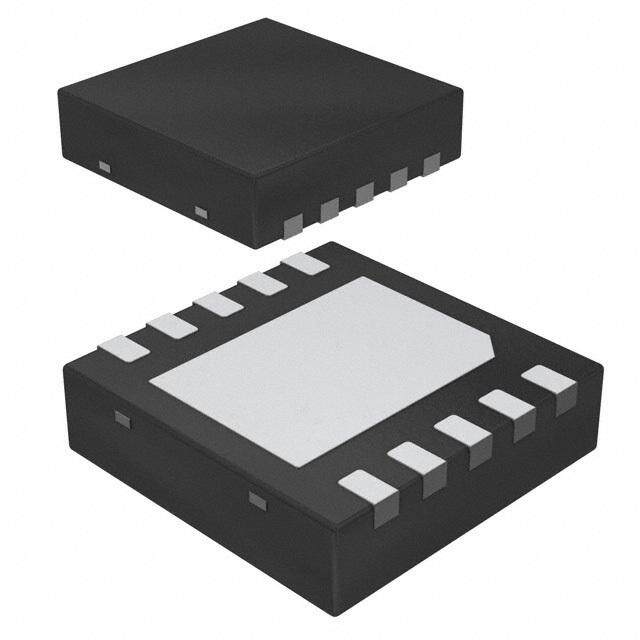
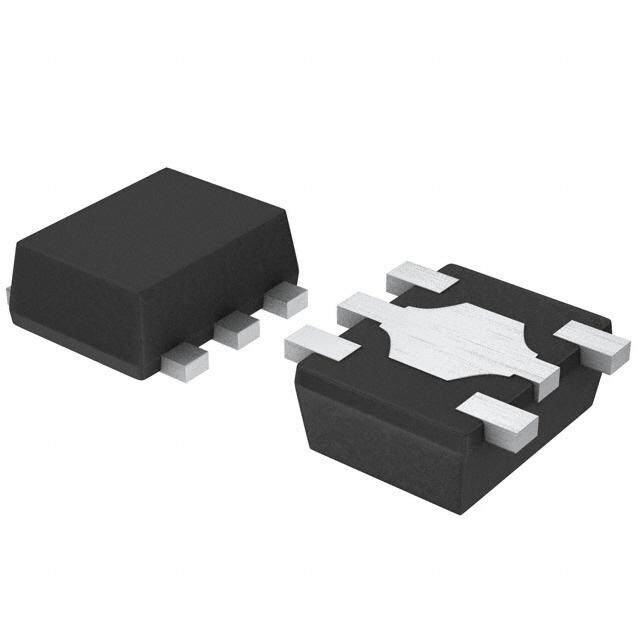
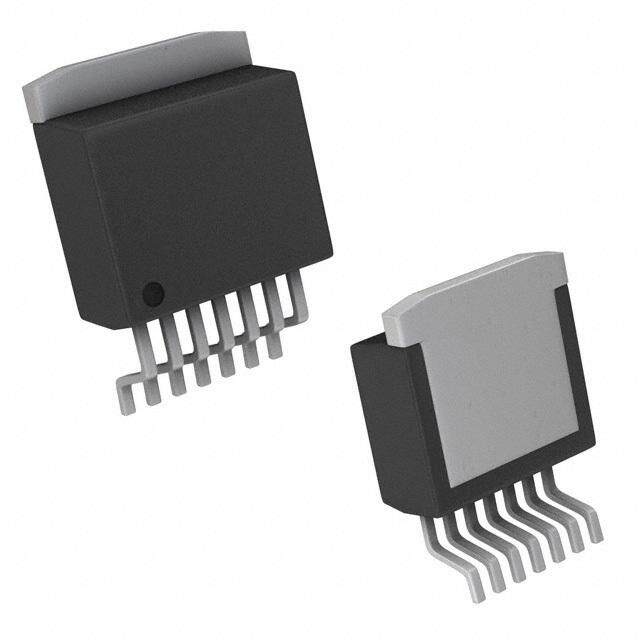
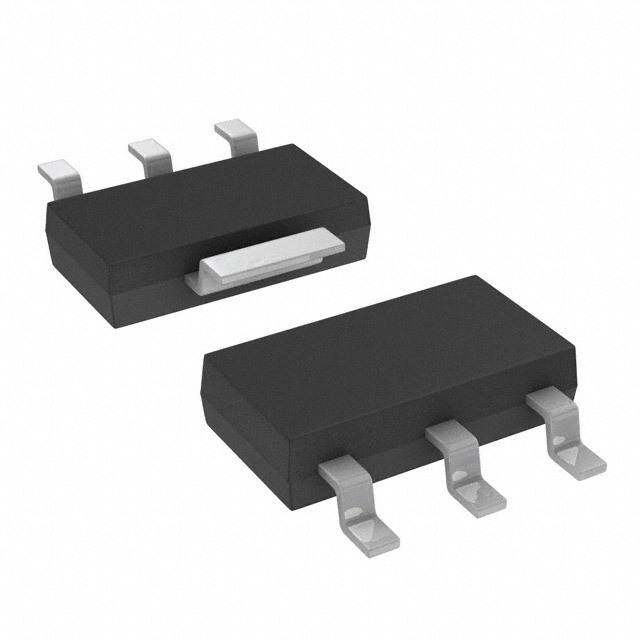

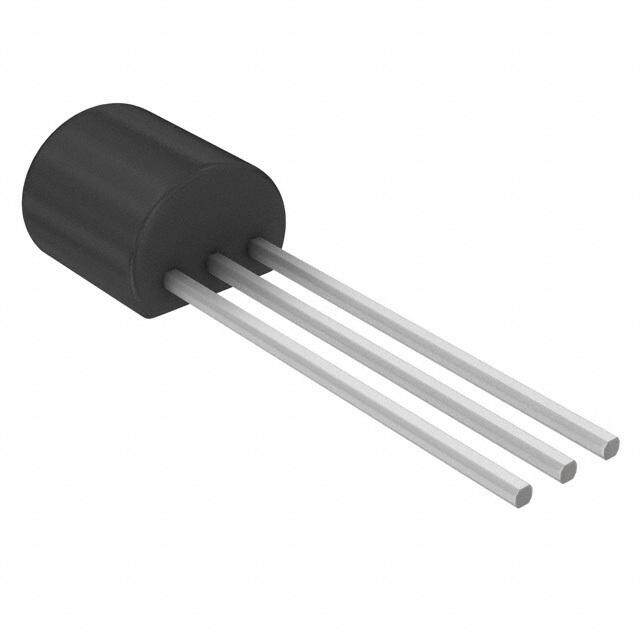

- 商务部:美国ITC正式对集成电路等产品启动337调查
- 曝三星4nm工艺存在良率问题 高通将骁龙8 Gen1或转产台积电
- 太阳诱电将投资9.5亿元在常州建新厂生产MLCC 预计2023年完工
- 英特尔发布欧洲新工厂建设计划 深化IDM 2.0 战略
- 台积电先进制程称霸业界 有大客户加持明年业绩稳了
- 达到5530亿美元!SIA预计今年全球半导体销售额将创下新高
- 英特尔拟将自动驾驶子公司Mobileye上市 估值或超500亿美元
- 三星加码芯片和SET,合并消费电子和移动部门,撤换高东真等 CEO
- 三星电子宣布重大人事变动 还合并消费电子和移动部门
- 海关总署:前11个月进口集成电路产品价值2.52万亿元 增长14.8%

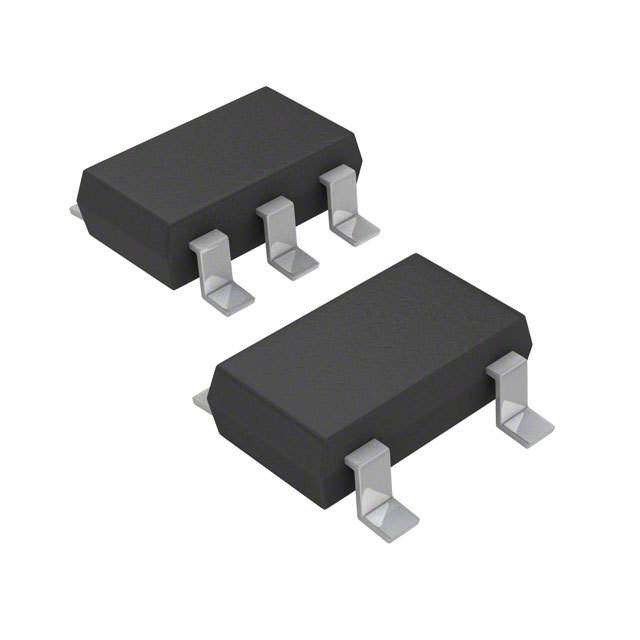
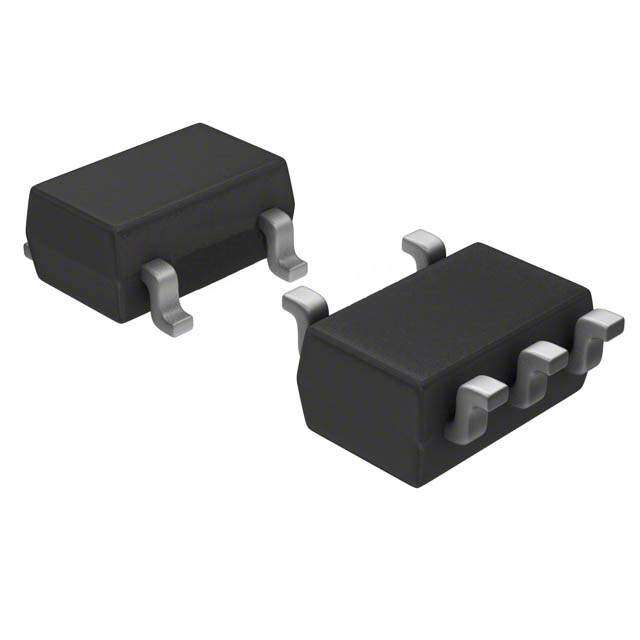

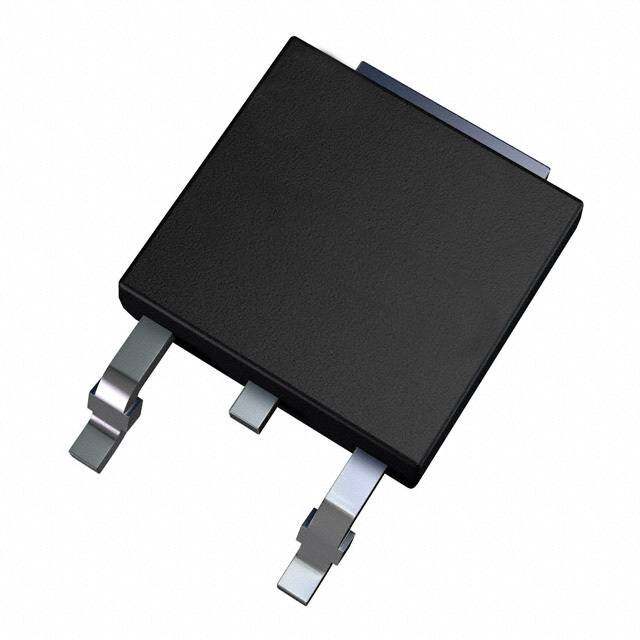
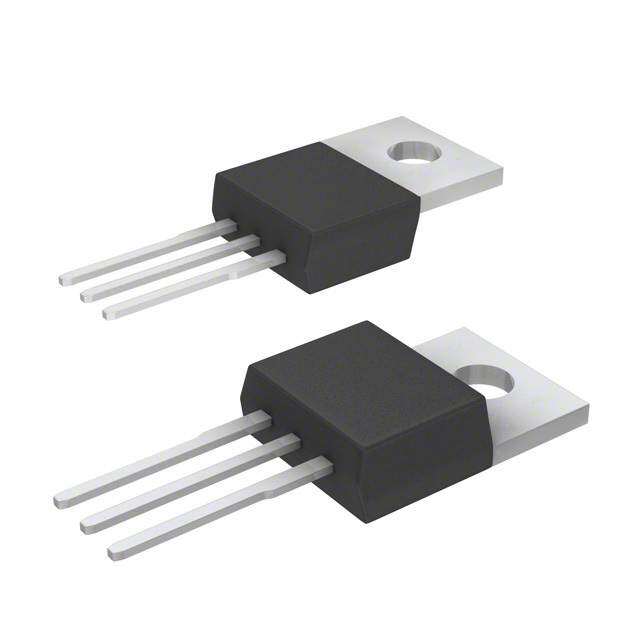

PDF Datasheet 数据手册内容提取
NCP698 LDO Regulator - CMOS, Ultra Low, Iq, I Enable GND, 150 mA This series of fixed output low−dropout linear regulators are designed for handheld communication equipment and portable battery http://onsemi.com powered applications which require low quiescent and ground current. This series features an ultra−low quiescent current of 2.5 (cid:2)A. Each device contains a voltage reference unit, an error amplifier, a PMOS 4 power transistor, resistors for setting output voltage, current limit, and temperature limit protection circuits. The NCP698 series provides an enable pin for ON/OFF control. 1 The NCP698 has been designed to be used with low cost ceramic SC82−AB (SC70−4) capacitors and requires a minimum output capacitor of 0.1 (cid:2)F. The SQ SUFFIX device is housed in the micro−miniature SC82−AB surface mount CASE 419C package. Standard voltage versions are 1.3, 1.5, 1.8, 2.5, 2.8, 3.0, 3.3, 3.5 and 5.0 V. Other voltages are available in 100 mV steps. PIN CONNECTIONS & Features • Ultra Low Quiescent Current of 2.5 (cid:2)A Typical MARKING DIAGRAMS • Output Voltage Accuracy of 2.0% • Operating Temperature Range of −40°C to 85°C GND 1 4 Enable • Enable Function (cid:2)xxxM • This is a Pb−Free Device (cid:2) Vin 2 3 Vout Typical Applications • Battery Powered Instruments Top View) • Hand−Held Instruments • xxx = Specific Device Code Camcorders and Cameras M = Month Code* (cid:2) = Pb−Free Package ON (Note: Microdot may be in either location) *Date Code orientation and/or position and GND Enable underbar may vary depending upon manu- OFF facturing location. Input Output Vin Vout ORDERING INFORMATION + + C1 C2 See detailed ordering and shipping information in the package dimensions section on page 8 of this data sheet. This device contains 28 active transistors Figure 1. Typical Application Diagram © Semiconductor Components Industries, LLC, 2014 1 Publication Order Number: September, 2019 − Rev. 2 NCP698/D
NCP698 ÁÁÁÁÁÁÁÁÁÁÁÁÁÁÁÁÁÁÁÁÁÁÁÁÁÁÁÁÁÁÁÁÁ PIN FUNCTION DESCRIPTION ÁÁÁÁÁÁÁÁÁÁÁÁÁÁÁÁÁÁÁÁÁÁÁÁÁÁÁÁÁÁÁÁÁÁÁÁÁÁÁÁÁÁÁÁÁÁÁÁÁÁÁÁÁÁÁÁÁÁÁÁÁÁÁÁÁÁÁÁ ÁÁÁÁPinÁÁ No.ÁÁÁÁPÁÁin NÁÁameÁÁÁÁÁÁÁÁÁÁÁÁÁÁÁÁÁÁÁÁÁÁÁÁÁÁÁÁDesÁÁcripÁÁtionÁÁÁÁÁÁÁÁÁÁÁÁÁÁÁÁÁÁÁÁÁÁÁÁ ÁÁÁÁ1ÁÁÁÁÁÁÁÁGNÁÁD ÁÁÁÁPÁÁoweÁÁr suÁÁpply ÁÁgrouÁÁnd.ÁÁÁÁÁÁÁÁÁÁÁÁÁÁÁÁÁÁÁÁÁÁÁÁÁÁÁÁÁÁÁÁÁÁÁÁÁÁÁÁÁÁ ÁÁÁÁ2ÁÁÁÁÁÁÁÁViÁÁn ÁÁÁÁPÁÁositÁÁive pÁÁoweÁÁr supÁÁply ÁÁinpuÁÁt voltÁÁage.ÁÁÁÁÁÁÁÁÁÁÁÁÁÁÁÁÁÁÁÁÁÁÁÁÁÁÁÁÁÁÁÁÁÁÁÁ ÁÁÁÁ3ÁÁÁÁÁÁÁÁVoÁÁut ÁÁÁÁRÁÁeguÁÁlatedÁÁ outÁÁput vÁÁoltaÁÁge. ÁÁÁÁÁÁÁÁÁÁÁÁÁÁÁÁÁÁÁÁÁÁÁÁÁÁÁÁÁÁÁÁÁÁÁÁÁÁÁÁ ÁÁ4ÁÁÁÁEnaÁble ÁÁTÁhis iÁnputÁ is uÁsed Áto plÁace tÁhe dÁevicÁe intÁo lowÁ−poÁwer ÁstanÁdby.Á WheÁn thÁis inÁput iÁs pulÁled lÁow, tÁhe ÁÁÁÁ device is disabled. If this function is not used, Enable should be connected to Vin. ÁÁÁÁÁÁÁÁÁÁÁÁÁÁÁÁÁÁÁÁÁÁÁÁÁÁÁÁÁÁÁÁÁÁÁÁÁÁÁÁÁÁÁÁÁÁÁÁÁÁÁÁÁÁÁÁÁÁÁÁÁÁÁÁÁÁÁÁÁÁ − N/C No internal connection. ÁÁÁÁÁÁÁÁÁÁÁÁÁÁÁÁÁÁÁÁÁÁÁÁÁÁÁÁÁÁÁÁÁÁÁ MAXIMUM RATINGS Rating Symbol Value Unit Input Voltage Vin 6.0 V Enable Voltage Enable −0.3 to Vin +0.3 V Output Voltage Vout −0.3 to Vin +0.3 V Power Dissipation and Thermal Characteristics (Note 1) Power Dissipation PD Internally Limited W Thermal Resistance, Junction−to−Ambient (1 oz copper, 1 in2 copper area) R(cid:3)JA 235 °C/W Operating Junction Temperature TJ +150 °C Operating Ambient Temperature TA −40 to +85 °C Storage Temperature Tstg −55 to +150 °C Stresses exceeding those listed in the Maximum Ratings table may damage the device. If any of these limits are exceeded, device functionality should not be assumed, damage may occur and reliability may be affected. 1. Refer to Electrical Characteristics and Application Information for Safe Operating Area. 2. This device series contains ESD protection and exceeds the following tests: Human Body Model 2000 V per MIL−STD−883, Method 3015 Machine Model Method 200 V 3. Latch up capability (85°C) (cid:2)100 mA DC with trigger voltage. http://onsemi.com 2
NCP698 ELECTRICAL CHARACTERISTICS (Vin = Vout(nom.) + 1.0 V, Venable = Vin, Cin = 1.0 (cid:2)F, Cout = 1.0 (cid:2)F, TA = 25°C, unless otherwise noted. Note 4) Characteristic Symbol Min Typ Max Unit Output Voltage (Iout = 1.0 mA) Vout V 1.3 V 1.261 1.3 1.339 1.5 V 1.455 1.5 1.545 1.8 V 1.746 1.8 1.854 2.5 V 2.425 2.5 2.575 2.8 V 2.744 2.8 2.856 3.0 V 2.940 3.0 3.060 3.3 V 3.234 3.3 3.366 3.5 V 3.430 3.5 3.570 5.0 V 4.900 5.0 5.100 Output Voltage (TA = −40 to +85°C, Iout = 1.0 mA) Vout V 1.3 V 1.261 1.3 1.339 1.5 V 1.455 1.5 1.545 1.8 V 1.746 1.8 1.854 2.5 V 2.425 2.5 2.575 2.8 V 2.716 2.8 2.884 3.0 V 2.910 3.0 3.090 3.3 V 3.201 3.3 3.399 3.5 V 3.430 3.5 3.570 5.0 V 4.900 5.0 5.100 Line Regulation Regline mV 1.5 V−4.4 V (Vin = Vo(nom.) + 1.0 V to 6.0 V − 10 20 4.5 V−5.0 V (Vin = 5.5 V to 6.0 V) − 10 20 Load Regulation (Iout = 10 mA to 150 mA) Regload − 20 60 mV Output Current (Vout = (Vout at Iout = 150 mA) −3.0%) Io(nom.) mA 1.3 V to 3.9 V (Vin = Vout(nom.) + 2.0 V) 150 280 − 4.0 V−5.0 V (Vin = 6.0 V) 150 280 − Dropout Voltage (TA = −40°C to 85°C, Iout = 80 mA, Measured at Vout −3.0%) Vin−Vout mV 1.3 V − 750 1200 1.5 V − 550 800 1.8 V − 400 550 2.5 V−2.8 V − 250 400 3.0 V−3.5 V − 200 350 5.0 V − 140 200 Dropout Voltage (TA = −40°C to 85°C, Iout = 150 mA, Measured at Vout −3.0%) Vin−Vout mV 1.3 V − 1050 1500 1.5 V − 870 1070 1.8 V − 700 900 2.5 V−2.8 V − 520 700 3.0 V−3.5 V − 370 525 5.0 V − 280 400 Disable Current (Enable Input = 0 V) IDIS − 0.1 1.0 (cid:2)A Quiescent Current (Enable Input = Vin, Iout = 0 mA) IQ − 2.5 6.0 (cid:2)A Ground Current (Enable Input = Vin, Iout = 1.0 mA to 150 mA) IGND − 2.5 6.0 (cid:2)A Output Short Circuit Current Iout(max) mA 1.3 V to 3.9 V (Vin = Vnom + 2.0 V) 150 300 600 4.0 V−5.0 V (Vin = 6.0 V) 150 300 600 Output Voltage Noise (f = 100 Hz to 100 kHz, Vout = 3.0 V) Vn − 100 − (cid:2)Vrms http://onsemi.com 3
NCP698 ELECTRICAL CHARACTERISTICS (continued) (Vin = Vout(nom.) + 1.0 V, Venable = Vin, Cin = 1.0 (cid:2)F, Cout = 1.0 (cid:2)F, TA = 25°C, unless otherwise noted. Note 4) Enable Input Threshold Voltage Vth(en) V (Voltage Increasing, Output Turns On, Logic High) 1.3 − − (Voltage Decreasing, Output Turns Off, Logic Low) − − 0.3 Output Voltage Temperature Coefficient TC − (cid:2)100 − ppm/°C Product parametric performance is indicated in the Electrical Characteristics for the listed test conditions, unless otherwise noted. Product performance may not be indicated by the Electrical Characteristics if operated under different conditions. 4. Performance guaranteed over the indicated operating temperature range by design and/or characterization, production tested at TJ = TA = 25°C. Low duty cycle pulse techniques are used during testing to maintain the junction temperature as close to ambient as possible. 5. Maximum package power dissipation limits must be observed. PD(cid:3)TJ(max) (cid:4)TA R(cid:3)JA http://onsemi.com 4
NCP698 2.9 3 A) VIN = 4.0 V A) (cid:2)NT ( 2.7 VIOOUUTT = = 0 3 m.0A V (cid:2)NT ( 2.5 VOUT = 3.0 V E E R 2.5 R 2 R R U U C C T 2.3 T 1.5 N N E E C C S 2.1 S 1 E E UI UI Q Q , Q 1.9 , Q 0.5 I I 1.7 0 −60 −40 −20 0 20 40 60 80 100 0 1 2 3 4 5 6 T, TEMPERATURE (°C) VIN, INPUT VOLTAGE (V) Figure 2. Quiescent Current versus Temperature Figure 3. Quiescent Current versus Input Voltage 3.020 3.5 V)3.015 V) 3 E ( E ( IOUT = 30 mA G VIN = 6.0 V G 2.5 TA3.010 TA L L O O 2 V V T 3.005 T U U P P 1.5 T T U3.000 U O O , OUT2.995 VOUT(nom) = 3.0 V VIN = 4.0 V , OUT 1 V IOUT = 10 mA V 0.5 2.990 0 −60 −40 −20 0 20 40 60 80 100 0 1 2 3 4 5 6 T, TEMPERATURE (°C) VIN, INPUT VOLTAGE (V) Figure 4. Output Voltage versus Temperature Figure 5. Output Voltage versus Input Voltage 300 4 GE (mV)250 VOUT(nom) = 3.0 V BLEGE (V) 2 OLTA200 80 mA LOAD ENAOLTA 0 VCIINN == 41..00 V(cid:2)F V V T U O150 3 P , DROT100 40 mA LOAD UTPUTGE (V) 2 CIOOUUTT = = 1 00. 1m (cid:2)AF U OA VO 50 , TLT 1 V − IN 0 10 mA LOAD VOUVO 0 −50 −25 0 25 50 75 100 125 0 50 100 150 200 250 300 350 400 T, TEMPERATURE (°C) t, TIME ((cid:2)s) Figure 6. Dropout Voltage versus Temperature Figure 7. Turn−On Response http://onsemi.com 5
NCP698 V, INPUTINOLTAGE (V) 645 , OUTPUTUTRRENT (mA) 63000 IVOINU T= = 4 1.0 m VA to 30 mA V 3 IOCU−30 E 1 E 1 AGV) AGV) VOUT = 3.0 V OLTON ( 0.5 OLTON ( 0.5 COUT = 0.1 (cid:2)F OUTPUT VDEVIATI−0−.051 VCIOOOUUUTTT = == 1 300.. 01m V(cid:2)AF OUTPUT VDEVIATI−0−.051 0 50 100 150 200 250 300 350 400 450 500 0 50 100 150 200 250 300 350 400 450500 t, TIME ((cid:2)s) t, TIME ((cid:2)s) Figure 8. Line Transient Response Figure 9. Load Transient Response TA) 60 z)3.5 Um H TPT ( 30 IOUT = 1 mA to 30 mA √V/ 3 VIN = 5.0 V , OUOUTURREN 0 VIN = 4.0 V OISE (m2.5 VICOOOUUUTTT = == 5 300.. 01m V(cid:2)AF IC −30 N E 2 AGEmV) 400 LTAG1.5 VOLTON ( 200 T VO 1 OUTPUT DEVIATI−−4200000 CVOOUUTT == 31..00 V(cid:2)F V, OUTPUn0.05 0 100 200 300 400 500 600 700 800 9001000 0.01 0.1 1 10 100 1000 t, TIME ((cid:2)s) f, FREQUENCY (kHz) Figure 10. Load Transient Response Figure 11. Output Voltage Noise DEFINITIONS Load Regulation Line Regulation The change in output voltage for a change in output current The change in output voltage for a change in input voltage. at a constant temperature. The measurement is made under conditions of low dissipation or by using pulse technique such that the average chip Dropout Voltage temperature is not significantly affected. The input/output differential at which the regulator output no longer maintains regulation against further reductions in Line Transient Response input voltage. Measured when the output drops 3.0% below Typical over and undershoot response when input voltage its nominal. The junction temperature, load current, and is excited with a given slope. minimum input supply requirements affect the dropout level. Thermal Protection Maximum Power Dissipation Internal thermal shutdown circuitry is provided to protect The maximum total dissipation for which the regulator the integrated circuit in the event that the maximum junction will operate within its specifications. temperature is exceeded. When activated at typically 160°C, the regulator turns off. This feature is provided to prevent Quiescent Current failures from accidental overheating. The quiescent current is the current which flows through the ground when the LDO operates without a load on its Maximum Package Power Dissipation output: internal IC operation, bias, etc. When the LDO The maximum power package dissipation is the power becomes loaded, this term is called the Ground current. It is dissipation level at which the junction temperature reaches its actually the difference between the input current (measured maximum operating value, i.e. 125°C. Depending on the through the LDO input pin) and the output current. ambient power dissipation and thus the maximum available output current. http://onsemi.com 6
NCP698 APPLICATIONS INFORMATION A typical application circuit for the NCP698 is shown in on the PCB, the board material and also the ambient Figure 1. temperature effect the rate of temperature rise for the part. This is stating that when the devices have good thermal Input Decoupling (C1) conductivity through the PCB, the junction temperature will A 1.0 (cid:2)F capacitor either ceramic or tantalum is be relatively low with high power dissipation applications. recommended and should be connected close to the NCP698 The maximum dissipation the package can handle is package. Higher values and lower ESR will improve the given by: overall line transient response. TDK capacitor: C2012X5R1C105K, or C1608X5R1A105K PD(cid:3)TJ(max) (cid:4)TA R(cid:3)JA Output Decoupling (C2) If junction temperature is not allowed above the The NCP698 is a very stable regulator and does not maximum 125°C, then the NCP698 can dissipate up to require any specific Equivalent Series Resistance (ESR) or 250 mW @ 25°C. a minimum output current. Capacitors exhibiting ESRs The power dissipated by the NCP698 can be calculated ranging from a few m(cid:4) up to 10 (cid:4) can thus safely be used. from the following equation: The minimum decoupling value is 0.1 (cid:2)F and can be Ptot(cid:3)(cid:5)Vin*Ignd(Iout)(cid:6)(cid:7)[Vin(cid:4)Vout]*Iout augmented to fulfill stringent load transient requirements. The regulator accepts ceramic chip capacitors as well as or tloanadta lruemgu dlaetvioicne str.a Lnasrigenert vreaslupeosn sime.prove noise rejection and VinMAX(cid:3)PtoItg(cid:7)ndV(cid:7)ouIto*uItout TDK capacitor: C2012X5R1C105K, C1608X5R1A105K, If an 80 mA output current is needed then the ground or C3216X7R1C105K current from the data sheet is 2.5 (cid:2)A. For an NCP698 Enable Operation (3.0 V), the maximum input voltage will then be 6.0 V. The enable pin will turn on the regulator when pulled high and turn off the regulator when pulled low. These limits of 350 threshold are covered in the electrical specification section 330 of this data sheet. If the enable is not used, then the pin 310 should be connected to V . in 290 Hints W)270 No pin connected to Cu Plane Please be sure the Vin and GND lines are sufficiently C/ wide. When the impedance of these lines is high, there is a A (250 chance to pick up noise or cause the regulator to (cid:3)J230 malfunction. 210 Place external components, especially the output 190 capacitor, as close as possible to the circuit, and make leads 170 Pin 2 connected to Cu Plane as short as possible. 150 0 100 200 300 400 500 600 700 Thermal As power across the NCP698 increases, it might become PCB COPPER AREA (mm2) necessary to provide some thermal relief. The maximum Figure 12. R(cid:2)JA vs. Pad Copper Area power dissipation supported by the device is dependent (1 oz Cu thickness) upon board design and layout. Mounting pad configuration http://onsemi.com 7
NCP698 ORDERING INFORMATION Nominal Device Output Voltage Marking Package Shipping† NCP698SQ13T1G 1.3 LJW NCP698SQ15T1G 1.5 LJX NCP698SQ18T1G 1.8 LJY NCP698SQ25T1G 2.5 LJZ NCP698SQ28T1G 2.8 LKD SC82−AB 3000 / Tape & Reel NCP698SQ30T1G 3.0 LKA NCP698SQ33T1G 3.3 LKB NCP698SQ35T1G 3.5 LKE NCP698SQ50T1G 5.0 LKC †For information on tape and reel specifications, including part orientation and tape sizes, please refer to our Tape and Reel Packaging Specifications Brochure, BRD8011/D. http://onsemi.com 8
NCP698 PACKAGE DIMENSIONS SC−82AB CASE 419C−02 ISSUE F NOTES: A 1. DIMENSIONING AND TOLERANCING PER ANSI Y14.5M, 1982. G 2. CONTROLLING DIMENSION: MILLIMETER. C 3. 419C−01 OBSOLETE. NEW STANDARD IS D3 PL N 419C−02. 4. DIMENSIONS A AND B DO NOT INCLUDE MOLD FLASH, PROTRUSIONS, OR GATE BURRS. 4 3 MILLIMETERS INCHES S B K DIM MIN MAX MIN MAX 1 2 A 1.80 2.20 0.071 0.087 B 1.15 1.35 0.045 0.053 C 0.80 1.10 0.031 0.043 D 0.20 0.40 0.008 0.016 H F F 0.30 0.50 0.012 0.020 J G 1.10 1.50 0.043 0.059 L 0.05 (0.002) H 0.00 0.10 0.000 0.004 J 0.10 0.26 0.004 0.010 K 0.10 −−− 0.004 −−− L 0.05 BSC 0.002 BSC N 0.20 REF 0.008 REF S 1.80 2.40 0.07 0.09 SOLDERING FOOTPRINT* 1.30 0.0512 0.65 0.026 1.90 0.075 0.95 0.037 0.90 0.035 (cid:8) (cid:9) 0.70 mm SCALE 10:1 0.028 inches *For additional information on our Pb−Free strategy and soldering details, please download the ON Semiconductor Soldering and Mounting Techniques Reference Manual, SOLDERRM/D. ON Semiconductor and are registered trademarks of Semiconductor Components Industries, LLC (SCILLC). SCILLC owns the rights to a number of patents, trademarks, copyrights, trade secrets, and other intellectual property. A listing of SCILLC’s product/patent coverage may be accessed at www.onsemi.com/site/pdf/Patent−Marking.pdf. SCILLC reserves the right to make changes without further notice to any products herein. SCILLC makes no warranty, representation or guarantee regarding the suitability of its products for any particular purpose, nor does SCILLC assume any liability arising out of the application or use of any product or circuit, and specifically disclaims any and all liability, including without limitation special, consequential or incidental damages. “Typical” parameters which may be provided in SCILLC data sheets and/or specifications can and do vary in different applications and actual performance may vary over time. All operating parameters, including “Typicals” must be validated for each customer application by customer’s technical experts. SCILLC does not convey any license under its patent rights nor the rights of others. SCILLC products are not designed, intended, or authorized for use as components in systems intended for surgical implant into the body, or other applications intended to support or sustain life, or for any other application in which the failure of the SCILLC product could create a situation where personal injury or death may occur. Should Buyer purchase or use SCILLC products for any such unintended or unauthorized application, Buyer shall indemnify and hold SCILLC and its officers, employees, subsidiaries, affiliates, and distributors harmless against all claims, costs, damages, and expenses, and reasonable attorney fees arising out of, directly or indirectly, any claim of personal injury or death associated with such unintended or unauthorized use, even if such claim alleges that SCILLC was negligent regarding the design or manufacture of the part. SCILLC is an Equal Opportunity/Affirmative Action Employer. This literature is subject to all applicable copyright laws and is not for resale in any manner. PUBLICATION ORDERING INFORMATION LITERATURE FULFILLMENT: N. American Technical Support: 800−282−9855 Toll Free ON Semiconductor Website: www.onsemi.com Literature Distribution Center for ON Semiconductor USA/Canada P.O. Box 5163, Denver, Colorado 80217 USA Europe, Middle East and Africa Technical Support: Order Literature: http://www.onsemi.com/orderlit Phone: 303−675−2175 or 800−344−3860 Toll Free USA/Canada Phone: 421 33 790 2910 Fax: 303−675−2176 or 800−344−3867 Toll Free USA/Canada Japan Customer Focus Center For additional information, please contact your local Email: orderlit@onsemi.com Phone: 81−3−5817−1050 Sales Representative http://onsemi.com NCP698/D 9
Mouser Electronics Authorized Distributor Click to View Pricing, Inventory, Delivery & Lifecycle Information: O N Semiconductor: NCP698SQ13T1G NCP698SQ15T1G NCP698SQ18T1G NCP698SQ30T1G NCP698SQ33T1G NCP698SQ35T1G NCP698SQ50T1G NCP698SQ25T1G NCP698SQ28T1G
 Datasheet下载
Datasheet下载